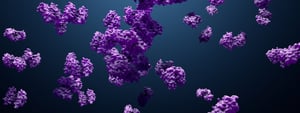Researchers from the Sanford Burnham Prebys Medical Discovery Institute in La Jolla are offering hope in the treatment of dry age-related macular degeneration (AMD), one of the leading causes of vision loss in people 60 years of age and older. This disease (which affects 11 million people in the United States alone) appears to be age-related and the number of cases is unfortunately growing, for reasons that are not completely clear. But in any case it is linked to an increase in the average life expectancy (it is calculated that in Western countries the number of patients is expected to double by 2050!).
What does dry AMD do? In practice, it damages the macula, i.e. the part of the retina (the nerve tissue of the eye) that is essential for sight and this occurs due to the progressive accumulation of “wrong” substances. The researchers from California identified a key-protein, vitronectin, which plays a fundamental role in the formation of these deposits under the retina, called drusen, and could therefore become the target for new specific medicines.
This would be a very significant step forward, given that currently there are no pharmacological treatments for dry age-related macular degeneration (there is also a form defined as “wet”, which is less frequent and that can, on the other hand, be cured). The results of the study were published in the journal Proceedings of the National Academy of Sciences (PNAS).
These deposits form over the years and contain three main elements: cholesterol, hydroxyapatite (the same material that also constitutes teeth and bones) and vitronectin, whose structure was defined for the first time by the same group of Californian researchers. What the researchers have achieved is the detailed description of the structure and the formation of these deposits, which have a cholesterol-rich core, surrounded by a shell of hydroxyapatite and a final topcoat of vitronectin. The latter is the driving force behind the formation of drusen, and for this reason targeting it with drugs that neutralize it could prove to be the winning formula.
“Our findings suggest that vitronectin, which is shaped like a sticky propeller, orchestrates the formation of the spherical deposits that accumulate and cause dry AMD”, says Francesca Marassi, coordinator of the study, “With this information, we can look for drugs that prevent the deposits from forming and help people retain their sight for as long as possible.”
Francesca Marassi is already working with scientists at the Conrad Prebys Center for Chemical Genomics to identify a series of compounds that can stop drusen from forming. Vitronectin, among other things, also holds implications for other typical age-related diseases: in particular, it is a major component of the amyloid plaques linked to Alzheimer’s disease and the cholesterol-rich plaques that cause heart disease. Therefore, developing a drug against vitronectin – the researchers hope – could also help to combat these other diseases.


